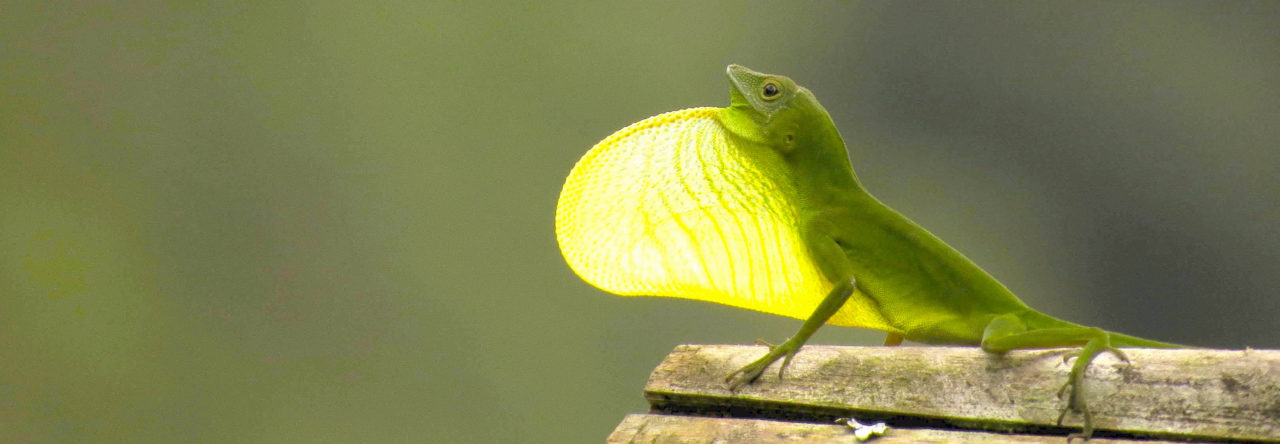 Many studies find that two populations are extremely genetically differentiated and assume that they are reproductively isolated. Last night, Anthony Geneva reported results of a study that goes the next step, actually testing for the form of reproductive isolation. His focus was on two parapatric members of the Anolis distichus group in Hispaniola that differ in dewlap color and genetically differentiated (see previous talk in this meeting by Julienne Ng). By bringing individuals into the laboratory and conducting a massive breeding experiment, he tested whether they would mate and produce offspring and, if so, whether the offspring were viable. This is an enormous undertaking–something like this has never been done on anoles.
Many studies find that two populations are extremely genetically differentiated and assume that they are reproductively isolated. Last night, Anthony Geneva reported results of a study that goes the next step, actually testing for the form of reproductive isolation. His focus was on two parapatric members of the Anolis distichus group in Hispaniola that differ in dewlap color and genetically differentiated (see previous talk in this meeting by Julienne Ng). By bringing individuals into the laboratory and conducting a massive breeding experiment, he tested whether they would mate and produce offspring and, if so, whether the offspring were viable. This is an enormous undertaking–something like this has never been done on anoles.
After one generation of the two generation experiment, some results are already clear. Members of the interspecific crosses (based on genetic differentiation, they have been named as different species) will mate–no pre-mating isolation, apparently, despite the different dewlap colors; or at least, not complete isolation. However, the number of inviable eggs is greater in the hybrid crosses. No signs yet of Haldane’s rule of any asymmetric degree of postmating isolation, but more work is yet to come.
- Evolution in Real Time on Lizard Island - March 23, 2025
- Spider Snags Adult Anolis osa - March 22, 2025
- An Homage to the Green Anoles of New Orleans - March 21, 2025


2 Pingbacks